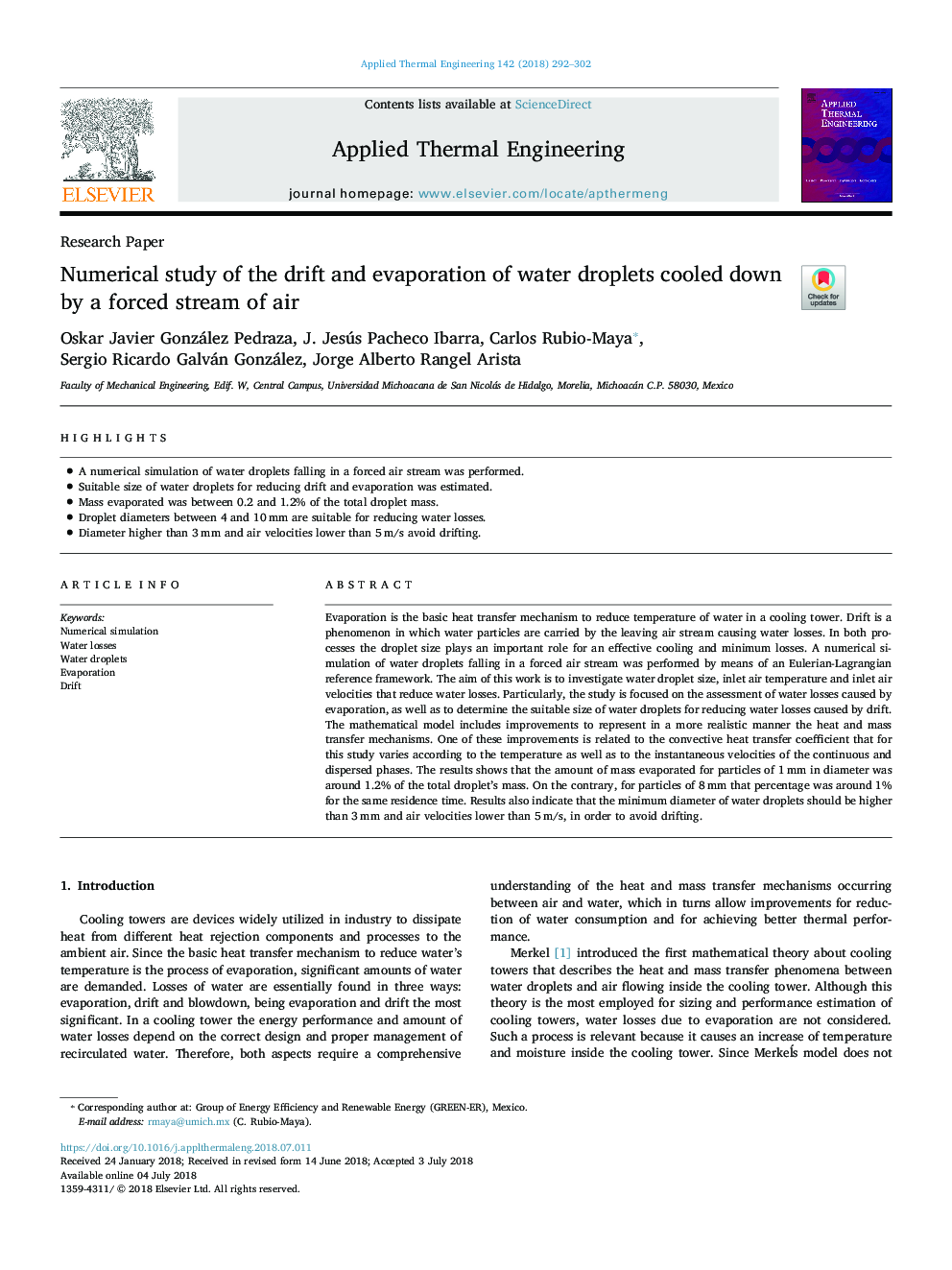| Article ID | Journal | Published Year | Pages | File Type |
|---|---|---|---|---|
| 7044780 | Applied Thermal Engineering | 2018 | 11 Pages |
Abstract
Evaporation is the basic heat transfer mechanism to reduce temperature of water in a cooling tower. Drift is a phenomenon in which water particles are carried by the leaving air stream causing water losses. In both processes the droplet size plays an important role for an effective cooling and minimum losses. A numerical simulation of water droplets falling in a forced air stream was performed by means of an Eulerian-Lagrangian reference framework. The aim of this work is to investigate water droplet size, inlet air temperature and inlet air velocities that reduce water losses. Particularly, the study is focused on the assessment of water losses caused by evaporation, as well as to determine the suitable size of water droplets for reducing water losses caused by drift. The mathematical model includes improvements to represent in a more realistic manner the heat and mass transfer mechanisms. One of these improvements is related to the convective heat transfer coefficient that for this study varies according to the temperature as well as to the instantaneous velocities of the continuous and dispersed phases. The results shows that the amount of mass evaporated for particles of 1â¯mm in diameter was around 1.2% of the total droplet's mass. On the contrary, for particles of 8â¯mm that percentage was around 1% for the same residence time. Results also indicate that the minimum diameter of water droplets should be higher than 3â¯mm and air velocities lower than 5â¯m/s, in order to avoid drifting.
Related Topics
Physical Sciences and Engineering
Chemical Engineering
Fluid Flow and Transfer Processes
Authors
Oskar Javier González Pedraza, J. Jesús Pacheco Ibarra, Carlos Rubio-Maya, Sergio Ricardo Galván González, Jorge Alberto Rangel Arista,
